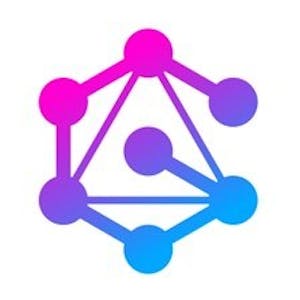December 9 - 10, 2021

Online
GraphQL Galaxy 2021
The biggest GraphQL conference in the cloud
Batteries Included Reimagined - The Revival of GraphQL Yoga
33 min
Batteries Included Reimagined - The Revival of GraphQL Yoga
The Guild has recently released Envelop - a new, modern GraphQL Server Framework and plugin system. In this talk I’ll share a brief overview of Envelop and why you should probably upgrade your existing GraphQL server to it.
From GraphQL Zero to GraphQL Hero with RedwoodJS
32 min
From GraphQL Zero to GraphQL Hero with RedwoodJS
Top ContentWe all love GraphQL, but it can be daunting to get a server up and running and keep your code organized, maintainable, and testable over the long term. No more! Come watch as I go from an empty directory to a fully fledged GraphQL API in minutes flat. Plus, see how easy it is to use and create directives to clean up your code even more. You're gonna love GraphQL even more once you make things Redwood Easy!
GraphQL for Web and Mobile Apps Made Simple
6 min
GraphQL for Web and Mobile Apps Made Simple
Building web and mobile apps with GraphQL should be simple. With Nhost, developers build web and mobile apps with automatically generated GraphQL APIs. In this talk, we'll show you how this is ideal for developers who want to boost productivity without worrying about infrastructure.
How to Edge Cache GraphQL APIs
23 min
How to Edge Cache GraphQL APIs
For years, not being able to cache GraphQL was considered one of its main downsides compared to RESTful APIs. Not anymore. GraphCDN makes it possible to cache almost any GraphQL API at the edge, and not only that but our cache is even smarter than any RESTful cache could ever be. Let's dive deep into the inner workings of GraphCDN to figure out how exactly we make this happen.
Tooling and Processes for Managing GraphQL at Scale
18 min
Tooling and Processes for Managing GraphQL at Scale
In this talk, we'll cover the libraries, tooling and processes we use to roll out GraphQL to hundreds of developers at Yelp.
Evaluating GraphQL for Setting Up an Enterprise-Grade Data Mesh
24 min
Evaluating GraphQL for Setting Up an Enterprise-Grade Data Mesh
I'll introduce the concept of a data mesh and why people increasingly are gravitating towards that as a solution to their data (both online and analytical) and application modernization problems. I'll talk about the key requirements around 1) domain-oriented decentralized data ownership and architecture, 2) data as a product, 3) self-serve data infrastructure as a platform, and 4) federated computational governance (ref). And then I'll talk about how GraphQL opens up an opportunity for laying the foundation for a data mesh and best-practices in building, operating and maintaining an enterprise grade data mesh.
Putting the Graph In GraphQL With The Neo4j GraphQL Library
23 min
Putting the Graph In GraphQL With The Neo4j GraphQL Library
GraphQL exposes application data as a graph which can introduce challenges if your backend isn't graph-ready (think slow JOINs as a result of nested GraphQL queries and the dreaded n+1 query problem). The Neo4j GraphQL library enables developers to build GraphQL APIs backed a native graph database using only GraphQL type definitions. In this talk we'll see how to build a GraphQL API without writing any resolvers, add custom logic, and deploy to the cloud.
GraphQL Performance and Monitoring
32 min
GraphQL Performance and Monitoring
GraphQL abstracts the downstream API calls from the frontend and all that frontend has to do is request fields in a query that are required for the rendering of the component. The frontend is not aware that a corresponding field might result in an API call or heavy computations on the backend side. This abstraction hits the performance when the GraphQL schema is not structured properly. Let's take an example to understand more:Here's the query to get available rooms for a hotel:hotel (id: $hotelId) { id rooms { id type name } }The frontend doesn't know that the rooms field inside the query hotel will fire another API call even type field would be fetched from another API endpoint. These nested API calls worsen the performance if there are more rooms. We can effectively solve this structuring the schema well and using data loaders.
Exploring the WordPress Graph with Next.js & WPGraphQL
23 min
Exploring the WordPress Graph with Next.js & WPGraphQL
Headless Wordpress using its built-in REST API is a powerful solution to scale WordPress to the web, but complex relationships can easily turn into chains of requests, making maintainability difficult along with the potential cost of performance.
With WPGraphQL, we can harness the benefits of GraphQL, leading to a better developer experience and optimized request logic, making sure we’re only delivering what we need to our users.We’ll explore these advantages and how these pieces fit together with modern tools like Next.js to build great experiences for the web.
Slides & more
With WPGraphQL, we can harness the benefits of GraphQL, leading to a better developer experience and optimized request logic, making sure we’re only delivering what we need to our users.We’ll explore these advantages and how these pieces fit together with modern tools like Next.js to build great experiences for the web.
Slides & more
When (Not) To Create A GraphQL Server
8 min
When (Not) To Create A GraphQL Server
Every (frontend) developer is asking for a GraphQL API but often lacks the backend knowledge to create a performant server. There are many different flavors in creating the perfect GraphQL server, ranging from schema-first to code-first or even auto generated solutions. Let me show you the pros and cons of each solution so, after this talk, you'll know which solution would best fit your team.
GraphQL Security Testing Automation for Developers
9 min
GraphQL Security Testing Automation for Developers
NeuraLegion's developer friendly security scanner enables development teams to run dead accurate security tests on every build as part of their pipeline. False alerts and periodic infrequent scanning results in technical and security debt, as well as insecure product. But what is developer first DAST, when and how should you be integrating it into your pipelines and what should you be looking for when enhancing your GrapQL security testing automation? Join this talk to get up to date.
All Things Graph...
8 min
All Things Graph...
REST is an API design architecture, which, in the last few years, has become the norm for implementing web services. It uses HTTP to get data and perform various operations (POST, GET, PUT, and DELETE) in JSON format, allowing better and faster parsing of data. But REST comes with some downsides that have enterprises considering alternative mechanisms to manage performance, developer time, and production of their APIs — enter GraphQL. GraphQL doesn't have to be a replacement to REST, the two API designs can co-exist and be leveraged for the appropriate use-case. Join us for a conversation about what benefits, shortcomings, tooling, and design decisions you need to consider while making this evaluation.
GraphQL Beyond HTTP APIs
8 min
GraphQL Beyond HTTP APIs
You might be familiar with HTTP GraphQL APIs. Did you know GraphQL does not have to be delivered over HTTP? We can use GraphQL in some different contexts. asynchronous queries, batch operations, user-provided scripts, WebAssembly, webhooks, and many more. We will explore how Shopify uses GraphQL in different contexts and how you can extend your current GraphQL schema beyond HTTP APIs.
Enlist the Help of Your Schema for Caching!
6 min
Enlist the Help of Your Schema for Caching!
Based on our experience running GraphCDN we’ve seen schemas that make it easier to cache and others that might throw some stones in your way. Let me share how to avoid common pitfalls and stay clear of the boulders and let your schema help you with caching GraphQL responses.
Building GraphQL APIs on Ethereum
8 min
Building GraphQL APIs on Ethereum
Blockchains are databases with a unique set of properties. Unlike most databases which are optimized for both read and write operations, blockchains are optimized for write operations, typically focused on optimizing and scaling transaction cost, transaction volume, and transaction speed.
In this talk, I'll dive into the web3 space, and show how developers can leverage The Graph Protocol to build performant, scalable, and decentralized GraphQL APIs and dapps on decentralized networks like Ethereum and IPS.
In this talk, I'll dive into the web3 space, and show how developers can leverage The Graph Protocol to build performant, scalable, and decentralized GraphQL APIs and dapps on decentralized networks like Ethereum and IPS.
Building a Serverless GraphQL API in 7 Minutes
8 min
Building a Serverless GraphQL API in 7 Minutes
At the beginning of the COVID-19 pandemic, Johns Hopkins University worked on gathering and refining data from multiple sources and provided the world with a Github repository and a bunch of CSV files. The Problem? It’s nearly impossible to build anything from raw data like this.In this live coding session, MongoDB Developer Advocate Maxime Beugnet will show you how to build a serverless GraphQL API based on this dataset using Python and the MongoDB Data Platform. We are finally going to put serverless and the MongoDB generous free tier to good use!
Serving GraphQL Subscriptions Using PHP and Drupal
7 min
Serving GraphQL Subscriptions Using PHP and Drupal
Most people in the GraphQL Galaxy are familiar with JavaScript tools when creating GraphQL servers.
But what do you do if your team’s speciality is PHP and you have all your existing data available in a Drupal based platform?In this session I’ll take you on a tour of the tools we used to build a PHP based service that handles GraphQL subscriptions powering Open Social’s Real-Time chat, and how you can use our learnings for your own project.
But what do you do if your team’s speciality is PHP and you have all your existing data available in a Drupal based platform?In this session I’ll take you on a tour of the tools we used to build a PHP based service that handles GraphQL subscriptions powering Open Social’s Real-Time chat, and how you can use our learnings for your own project.
Performance Monitoring of a Heterogeneous GraphQL Mesh App
8 min
Performance Monitoring of a Heterogeneous GraphQL Mesh App
Today it is fairly easy to integrate GraphQL on a client and server-side and get it all up and running quickly with any cloud service of your choice like e.g. Netlify or Vercel. With this setup, how can we monitor the performance, and how observe all parts together to find any root cause in case of problems?
Scalable GraphQL Applications Powered by Cloud-ready Distributed SQL Database
8 min
Scalable GraphQL Applications Powered by Cloud-ready Distributed SQL Database
Cloud native application development revolves around faster prototyping and building scalable applications for handling internet-scale traffic. GraphQL, with its roots in providing a flexible way to access data for UX applications, enables faster prototyping, leading to considerable adoption of GraphQL across different workloads. Increased adoption of GraphQL APIs in mission-critical applications prompts developers to think about the scalability challenges of the GraphQL APIs and corresponding backing database.
YugateDB, an open-source Distributed SQL database designed for cloud native applications from the ground up, is emerging as the popular option for building scalable and resilient GraphQL APIs. This talk will go over the features and deployment topologies of YugateDB, which allows developers to scale the relational queries of the GraphQL APIs seamlessly while not compromising on the PostgreSQL compatibility and features like triggers and functions.
YugateDB, an open-source Distributed SQL database designed for cloud native applications from the ground up, is emerging as the popular option for building scalable and resilient GraphQL APIs. This talk will go over the features and deployment topologies of YugateDB, which allows developers to scale the relational queries of the GraphQL APIs seamlessly while not compromising on the PostgreSQL compatibility and features like triggers and functions.
How to Make GraphQL Security Easier with StackHawk
9 min
How to Make GraphQL Security Easier with StackHawk
With StackHawk, engineering teams can run security tests against GraphQL APIs to find and fix vulnerabilities before they hit production. With automated testing on every PR, you can be confident that your app is secure. Join StackHawk co-founder and Chief Security Officer Scott Gerlach for a quick overview of GraphQL security testing with StackHawk.
Directive-driven GraphQL Development
21 min
Directive-driven GraphQL Development
You've heard of schema-first and code-first GraphQL development. You've seen tools that autogenerate GraphQL schemas from Swagger and SQL. But there's another way to build GraphQL APIs that's flexible, maintainable, and evolvable — just writing GraphQL SDL with directives!
GraphQL Authentication and Authorization at Scale
22 min
GraphQL Authentication and Authorization at Scale
At Unity, we use GraphQL federation to expose a wide range of business functionality across the organization in a single GraphQL schema. With an ever-growing number of services, this presents challenges for authentication and authorization across the board. I explore how we implemented GraphQL auth at the gateway level, the key design decisions behind it, and the wide-reaching benefits this can have.
GraphQL Caching Demystified
21 min
GraphQL Caching Demystified
How would you implement a performant GraphQL cache? How can we design a good algorithm for it? Is there a good Open Source solution that is efficient, scalable and easy to deploy? How is the caching key computed? What about cache invalidations? Would it be possible to deduplicate resolver execution? This might be seen as daunting but in reality is all code and algorithms.In this talk we are going to walk through a GraphQL caching system that we have developed for Mercurius - one of the fastest GraphQL servers for Node.js.
The Secret to Graph Onboarding
24 min
The Secret to Graph Onboarding
"What is GraphQL used for?” “How do I find the fields I need?” “How do I test queries against a local graph?” All of these are common and valid questions that developers who are learning GraphQL have when they are first getting started with a unified graph. The secret to overcoming these challenges? You guessed it, Apollo Studio! In this session, we’ll dive into the best tools in Apollo Studio to help new (and experienced) developers feel confident when querying and collaborating on a unified graph
GraphQL + Apollo + Next.js: A Lovely Trio
21 min
GraphQL + Apollo + Next.js: A Lovely Trio
Modern frontend applications want to efficiently query data on page load and navigate, format the data with TypeScript, and cache data between repeat requests. Setting that all up on your own is a chore... but with Apollo and Next.js, you can set up your client to auto-generate TypeScript types, cache query results intelligently, and generally be a breeze to work with.
Semantic Search through the Complete Wikipedia with Weaviate’s GraphQL API
17 min
Semantic Search through the Complete Wikipedia with Weaviate’s GraphQL API
Weaviate uses GraphQL to provide user-friendly data interaction. Weaviate is an open-source vector search engine, and all searches (e.g. semantic, contextual) are done via its GraphQL API. We’ve put a lot of thought into the design of the GraphQL API, which results in good user and developer experience. In this talk, I will take you along in the journey of how our GraphQL implementation was shaped according to user needs and software requirements, and show a demo of the current design for Weaviate. The demo will show how Weaviate’s GraphQL design enables semantic (vector) search in combination with scalar search through unstructured data. Machine learning models are used in the background, but with the current GraphQL design, users without a technical background can query the vector database easily.
Weaviate has a modular architecture, so users can connect various machine learning models on top of the vector database. Examples are the newly released Question Answering module and the Named Entity Recognition module. Modules can extend the GraphQL schema dynamically, to query the new features intuitively.This presentation contains a demo where we will query the complete Wikipedia, conduct semantic search queries and more. All through Weaviate’s GraphQL API. No prior knowledge is required.
Weaviate has a modular architecture, so users can connect various machine learning models on top of the vector database. Examples are the newly released Question Answering module and the Named Entity Recognition module. Modules can extend the GraphQL schema dynamically, to query the new features intuitively.This presentation contains a demo where we will query the complete Wikipedia, conduct semantic search queries and more. All through Weaviate’s GraphQL API. No prior knowledge is required.
All You (n)ever Wanted to Know about Introspection
20 min
All You (n)ever Wanted to Know about Introspection
With only an HTTP endpoint provided you get autocompletion and client-side validation. Isn't it magic? No, it is introspection. Whether you have heard about it or not, you have most likely already utilized it. Let's uncover together what it is, how it works and why it is the fuel to power the GraphQL ecosystem.
























